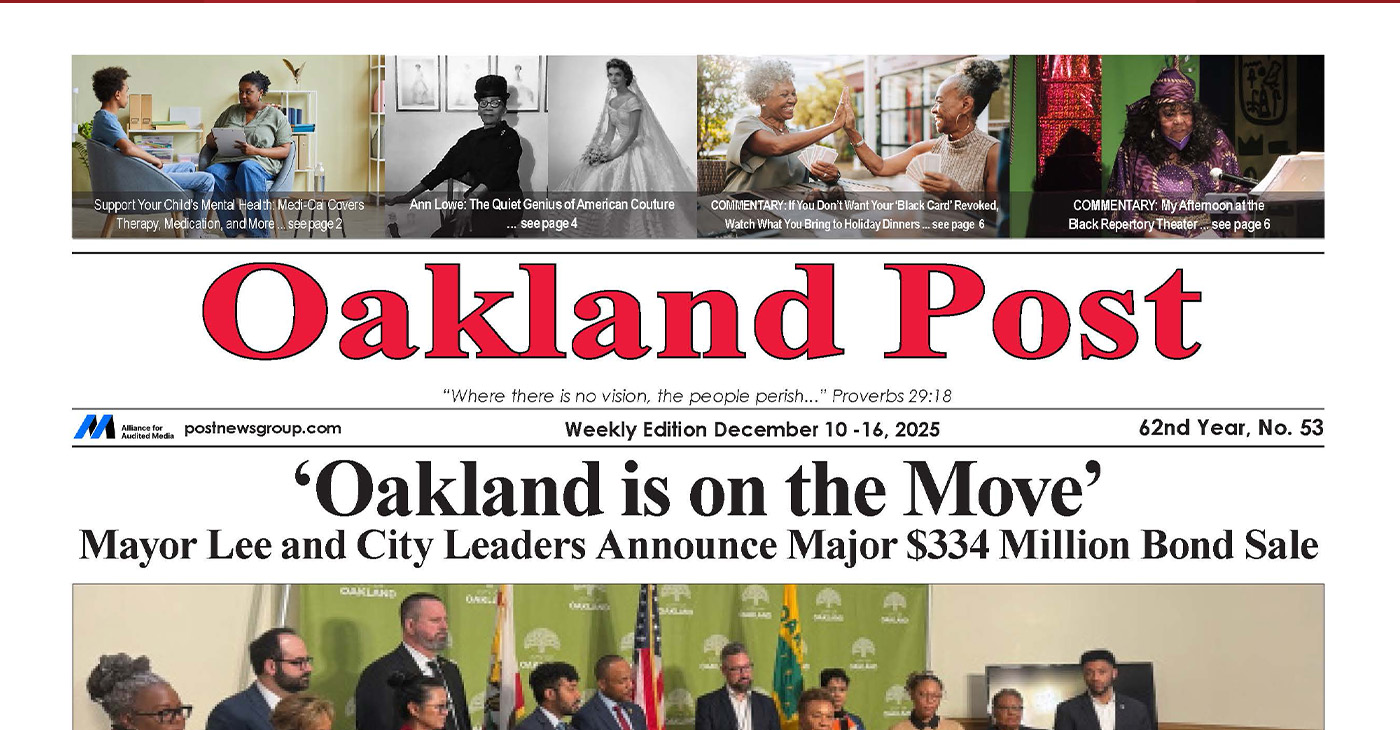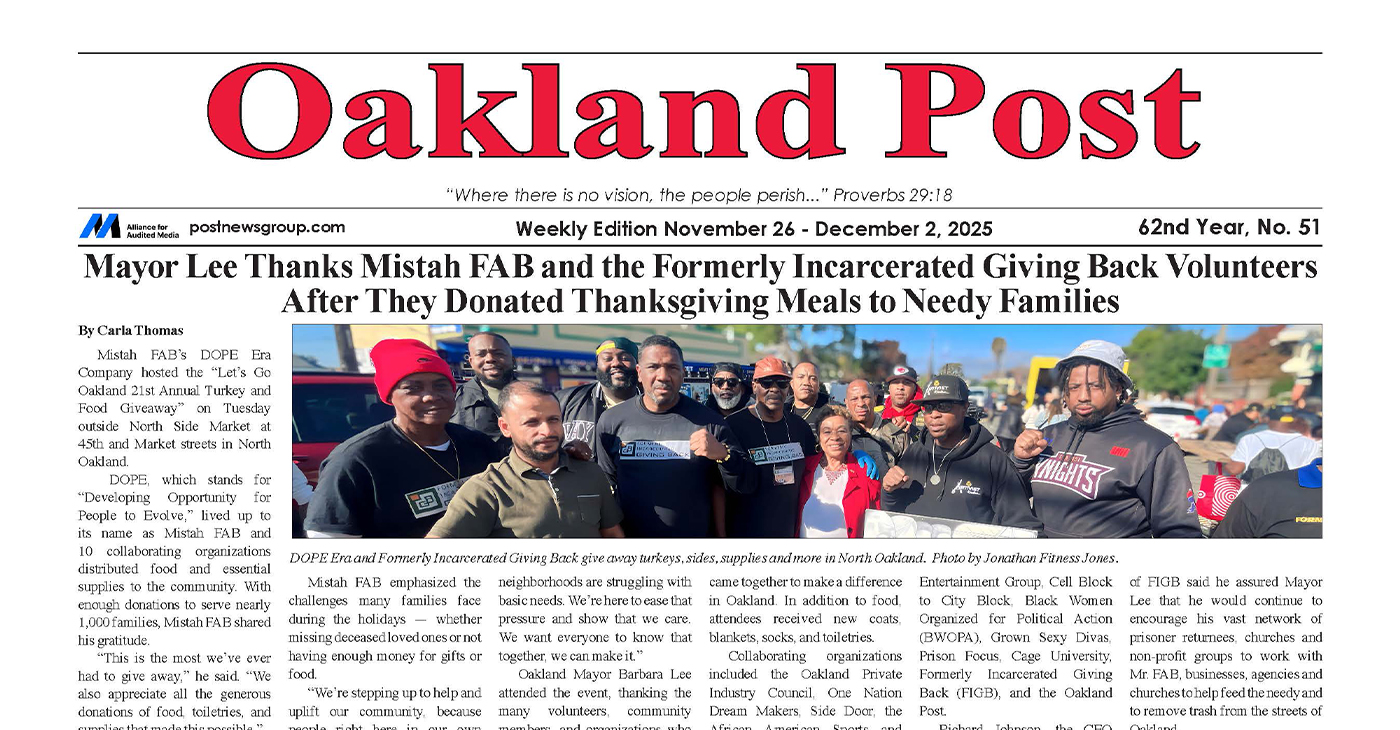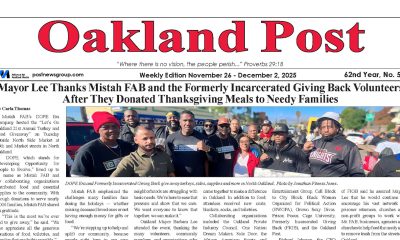California Black Media
LAO Releases Multi-Year Outlook: Modest Budget Deficits to Persist
The state budget deficit is projected to increase, which will require the Governor and Legislature to make more budget cuts over the next few years, California’s non-partisan Legislature Analyst’s Office (LAO) stated in a report last week. According to the LAO’s multiyear budget report that makes forecasts about the state’s general fund through the 2027-28 fiscal year, the state’s budget problem is $7 billion higher than expected due to lower revenue and spending estimates.

By California Black Media
The state budget deficit is projected to increase, which will require the Governor and Legislature to make more budget cuts over the next few years, California’s non-partisan Legislature Analyst’s Office (LAO) stated in a report last week.
According to the LAO’s multiyear budget report that makes forecasts about the state’s general fund through the 2027-28 fiscal year, the state’s budget problem is $7 billion higher than expected due to lower revenue and spending estimates.
“Under our office’s revenue and spending projections, and assuming the Governor’s May Revision policies are adopted, the budget problem for this year is $7 billion larger,” the report reads. “Put another way, the Legislature would need to take $7 billion in additional budget actions to balance the budget.”
This shortfall requires the Governor to reduce government spending by an additional $7 billion to balance the state’s deficit. However, if the legislature does approve the governor’s May Revisions the budget problems will carry over into the 2025-2026 fiscal year, increasing the existing budget deficit by nearly $10 billion.
California’s budget deficit could be as high as $73 billion, requiring the Legislature to consider harsh budget buts that can help the state economy recover long-term. However, the LAO’s spending estimates are lower than that of the state’s Department of Finance.
“The main reason that our estimates of the state’s operating deficits are slightly smaller than the administration’s is that our estimate of General Fund spending is lower than the administration’s estimates,” stated the LAO in the multiyear budget report.
The LAO’s estimates exclude spending on schools and community colleges, and lower estimated expenditures for Health and Human Services (HHS) programs. Based on the LAO’s estimates, Health programs grow annually by an average of 5.1 percent compared to the Newsom Administration’s estimated 8 percent.
“Our office has little insight into the components of, or assumptions underlying, the administration’s projections in HHS. As a result, we cannot identify the precise source of these differences—or the comparative reliability of our respective estimates — with confidence,” the LAO report stated.
Given the projections, the LAO recommends that the Legislature maintain an overall structure similar to the Governor’s May revisions in the final budget package.
Activism
2025 in Review: Seven Questions for Black Women’s Think Tank Founder Kellie Todd Griffin
As the president and CEO of the California Black Women’s Collective Empowerment Institute, Griffin is on a mission to shift the narrative and outcomes for Black women and girls. She founded the nation’s first Black Women’s Think Tank, securing $5 million in state funding to fuel policy change.

By Edward Henderson
California Black Media
With more than 25 years of experience spanning public affairs, community engagement, strategy, marketing, and communications, Kellie Todd Griffin is recognized across California as a leader who mobilizes people and policy around issues that matter.
As the president and CEO of the California Black Women’s Collective Empowerment Institute, Griffin is on a mission to shift the narrative and outcomes for Black women and girls. She founded the nation’s first Black Women’s Think Tank, securing $5 million in state funding to fuel policy change.
Griffin spoke with California Black Media (CBM) about her successes and setbacks in 2025 and her hopes for 2026.
Looking back at 2025, what stands out to you as your most important achievement and why?
Our greatest achievement in this year is we got an opportunity to honor the work of 35 Black women throughout California who are trailblazing the way for the next generation of leaders.
How did your leadership, efforts and investments as president and CEO California Black Women’s Collective Empowerment Institute contribute to improving the lives of Black Californians?
We’re training the next leaders. We have been able to train 35 women over a two-year period, and we’re about to start a new cohort of another 30 women. We also have trained over 500 middle and high school girls in leadership, advocacy, and financial literacy.
What frustrated you the most over the last year?
Getting the question, “why.” Why advocate for Black women? Why invest in Black people, Black communities? It’s always constantly having to explain that, although we are aware that there are other populations that are in great need, the quality-of-life indices for Black Californians continue to decrease. Our life expectancies are decreasing. Our unhoused population is increasing. Our health outcomes remain the worst.
We’re not asking anyone to choose one group to prioritize. We are saying, though, in addition to your investments into our immigrant brothers and sisters – or our religious brothers and sisters – we are also asking you to uplift the needs of Black Californians. That way, all of us can move forward together.
What inspired you the most over the last year?
I’ve always been amazed by the joy of Black women in the midst of crisis.
That is really our secret sauce. We don’t let the current state of any issue take our joy from us. It may break us a little bit. We may get tired a little bit. But we find ways to express that – through the arts, through music, through poetry.
What is one lesson you learned in 2025 that will inform your decision-making next year?
Reset. It’s so important not to be sitting still. We have a new administration. We’re seeing data showing that Black women have the largest unemployment rate. We’ve lost so many jobs. We can have rest – we can be restful – but we have to continue the resistance.
In one word, what is the biggest challenge Black Californians faced in 2025?
Motivation.
I choose motivation because of the tiredness. What is going to motivate us to be involved in 2026?
What is the goal you want to achieve most in 2026?
I want to get Black Californians in spaces and places of power and influence – as well as opportunities to thrive economically, socially, and physically.
Activism
Oakland Post: Week of December 10 – 16, 2025
The printed Weekly Edition of the Oakland Post: Week of – December 10 – 16, 2025

To enlarge your view of this issue, use the slider, magnifying glass icon or full page icon in the lower right corner of the browser window.
Activism
Oakland Post: Week of November 26 – December 2, 2025
The printed Weekly Edition of the Oakland Post: Week of November 26 – December 2, 2025

To enlarge your view of this issue, use the slider, magnifying glass icon or full page icon in the lower right corner of the browser window.
-

 Activism4 weeks ago
Activism4 weeks agoIN MEMORIAM: William ‘Bill’ Patterson, 94
-

 Activism4 weeks ago
Activism4 weeks agoOakland Post: Week of November 19 – 25, 2025
-

 #NNPA BlackPress3 weeks ago
#NNPA BlackPress3 weeks agoLIHEAP Funds Released After Weeks of Delay as States and the District Rush to Protect Households from the Cold
-

 #NNPA BlackPress4 weeks ago
#NNPA BlackPress4 weeks agoBeyoncé and Jay-Z make rare public appearance with Lewis Hamilton at Las Vegas Grand Prix
-

 Alameda County2 weeks ago
Alameda County2 weeks agoSeth Curry Makes Impressive Debut with the Golden State Warriors
-

 Activism3 weeks ago
Activism3 weeks agoOakland Post: Week of November 26 – December 2, 2025
-

 #NNPA BlackPress3 weeks ago
#NNPA BlackPress3 weeks agoSeven Steps to Help Your Child Build Meaningful Connections
-

 #NNPA BlackPress3 weeks ago
#NNPA BlackPress3 weeks agoSeven Steps to Help Your Child Build Meaningful Connections


















































